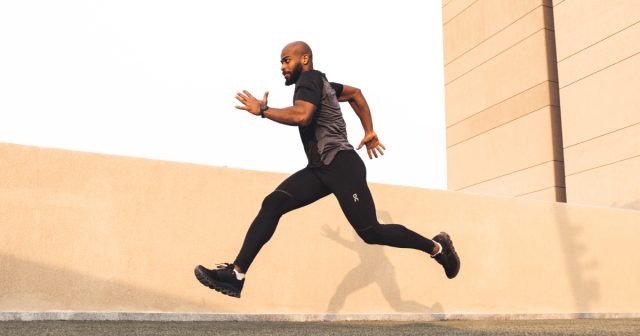Even if you’re an experienced athlete, creating a running training plan can be a difficult task. It can be hard to optimize your efforts, given the wide range of variables and personal inconsistency.
This oftentimes requires a fluid approach, where metrics are monitored over a set period of time and changes are made (or not) based on data. A strong running training plan, tailored to your goals and needs, can help you not only improve, but keep you healthy for the long haul.
A strong running training plan can help you improve, but how to create one without hiring a coach?
On a theoretical level, this is all fine and good – but what about specifics? How can you build a running training plan without hiring a hands-on coach?
The third episode of our How to Start Running video series covers the essentials aspects you need to take into account when you build a running training plan.
The importance of a running training plan
If you’ve read our beginner’s guide to starting running, you know that sometimes, the hardest part of running isn’t the running itself, but just getting going: hopping in your gear, stepping out the door, and adding pace. You know you’ll feel better afterwards, and you know you’ll be thankful that you went, but convincing yourself is hard at times. So how can you help yourself stick to it, when times get tough? Making a solid, but flexible running plan is a great start.
A training plan can also solve some of the issues even experienced runners face. After they have reached the initial goal they set themselves – competed in a 5K, ran for 45 minutes without getting exhausted, or made a half-hour run a regular workout routine – they ask themselves, “Now what? How do I become even better as a runner?”
To get better, you need a plan. A lack of an exercise program rarely leads to good results and systematic development. If you want to gradually become a better runner, then you need to do a little bit of planning. Without planning and tracking your exercises, you run the risk of either sticking to a very similar routine, week in – week out, and never progress, or you bite more than you can chew, adding too much work too fast and then either become burnt out or injured.
There are three basic principles that make for a good running plan:
1) You have a goal
2) You add different types of runs to your training – and different kinds of training to your routine
3) You increase your load – distance and intensity – gradually, allowing enough recovery time.
Running plan: Best Practice and Tips
Now that we’ve covered the principles of running training plan, let’s dive deep into what makes a great plan for running. To answer this not-so-straightforward question, we reached out to Greg Mueller, a USA Triathlon, USA Cycling, USA Track and Field and International Triathlon Union certified coach with decades of experience in the endurance industry.
Here, Mueller breaks down the components of a personalized running training plan, and additional tools, resources and metrics he finds helpful along the way.
Before you start creating a running training plan, how should you approach goal setting?
The most critical part is to be realistic. Look back at your most recent result, your current health and your future schedule and set a goal that challenges you — but one that’s also a stepping stone to bigger goals later.
What resources can you recommend to a runner who’s creating a season-long training plan?
I like to use the Polar Flow Season Planner that allows you to identify your peak races and then do an appropriate “unload ” or “taper” pre-race, but so that your overall load (fitness) increases all year.
For professional athletes or athletes racing Kona, this would be different, but for most of us, consistency is key to long term success, health and fitness.
What Should You consider when building a running training plan?
I suggest that you look at your normal week. For example, what days are best for a long run? Place that in your week then take the next day off. The day after your off day you will be rested, so that can be a harder or interval day.
You should be looking at the small details of your schedule and fill workouts in around the reality of life. Once you have done this you can build specific load toward specific events (i.e. increase your long run or interval speed/frequency).
what are some common themes to keep in mind, no matter the distance?
This has the widest variety of answers because it’s based on your fitness, health and the demands of the distance. Your main goal is to show up at the race healthy and strong — this is best done with logging higher quality miles.
If you’re using a sports watch, you can monitor speed, heart rate, ground contact and cadence and measure how your body is responding to training.
Success at any distance requires endurance.
Also, success at any distance requires endurance. For that reason I like to place the long run at the end of the week and include a mid-week middle-distance run. When you can execute with no soreness and good energy, then it’s time to add intervals.
I encourage amateurs to work on developing race pace work versus faster than race pace work — the risk for injury is much lower when you’re conservative. Remember, first build miles while maintaining good health, then build frequency of miles and then add the fun stuff.
How should heart rate and running power be included in a running training plan?
Your brain is your motivation, your body is your engine and your Polar watch is your dashboard to know what’s going on inside.
Your body is your engine and your Polar watch is your dashboard to know what’s going on inside.
If you have a coach, they likely have a system to test your “systems” — what is your threshold power, what is your VO2 max, what is your race cadence, etc. Every coach creates a system to start with a test or race data that shows where the athlete is.
If you’re your own coach, start with those metrics. Then, create zones in one or all of these areas and compare these metrics to see how your training and races are evolving.
You may do a weekly run where you keep your heart rate in the same zones and compare pace. Or, you may be running at a certain running power and then compare your heart rate data. Obviously, you are looking for your heart rate to come down and pace and power to go up.
What about the non-running components — rest, recovery and cross-training?
For athletes writing their own plan, it’s easy to get too eager. It’s critical that you start by first building a week that you’re sure you can accomplish. This could be your frequency of runs, miles, speed etc.
Within that week, I suggest that every amateur include an off day the day after their most impactful run, a cross-training day that unloads the mind and body and several types of recovery. This may include massage, ice baths and foam rolling.
How can you Monitor if your training plan is leading you in the right direction?
This really depends on who you are and what your goals are.
- The first measure is if you’re healthy.
- The second measure is how your body reacts to the load. (Your Polar sports watch will give you valuable information on your recovery and help you monitor your heart rate variability (HRV), sleep quality and resting heart rate.)
- The final measure is if you’re faster — this is the most obvious measure, but all too often athletes put this first.
What’s The #1 tool for runners training solo or creating a training plan on their own?
A premium multisport watch does pretty much anything you could want and comes in a small, great looking package. Consider what information you want (or what kind of running data your coach needs) and then find a sports watch in your price range.
The final piece is actually tracking and analyzing your running data and adjusting your training load in response to your data.
If you’re curious to see what kind of running data Polar Flow offers, create a free Polar Flow account and take a peek!
If you liked this post, don’t forget to share so that others can find it, too.
Or give it a thumbs up!
I like this article
Please note that the information provided in the Polar Blog articles cannot replace individual advice from health professionals. Please consult your physician before starting a new fitness program.





